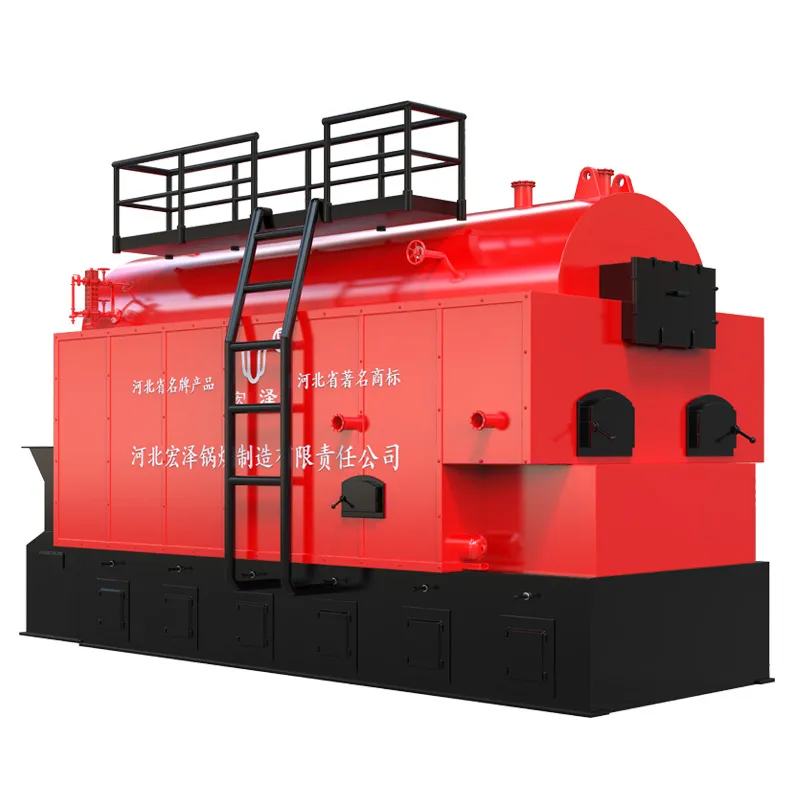
Dek . 06, 2024 03:30 Back to list
Understanding the Operational Principles of Thermal Oil Boilers for Effective Heating Solutions
Understanding the Working Principle of Thermal Oil Boilers
Thermal oil boilers are specialized heating systems designed to provide hot oil for various industrial processes. Unlike conventional steam boilers that use water as the heat transfer medium, thermal oil boilers circulate thermal oil, enabling them to operate at higher temperatures while maintaining lower pressures. This distinctive feature makes them essential in many industries, including chemical, food processing, and plastics. To understand their operation, it is crucial to delve into the working principle of thermal oil boilers.
At the core of a thermal oil boiler is the heat transfer medium—thermal oil. This oil operates at a much higher temperature than water and remains in liquid form under elevated temperatures. These properties allow thermal oil systems to efficiently transfer heat while minimizing the risk of pressure-induced hazards. The thermal oil used is often synthetic or organic, designed to withstand high temperatures without breaking down.
Understanding the Working Principle of Thermal Oil Boilers
The heating process is initiated when the burners ignite, heating the metal walls of the boiler. As the heat is transferred to the thermal oil inside, it begins to circulate through the system. The flow is maintained by pumps, which propel the heated oil to various heat users, such as radiators, heat exchangers, or directly into industrial processes that require heat.
thermal oil boiler working principle

The key to the efficiency of thermal oil boilers lies in their design. These boilers typically have large heating surfaces, ensuring that the maximum amount of heat is transferred to the oil. Additionally, the thermal oil is engineered to have high thermal conductivity, allowing it to absorb and retain heat effectively. This results in a rapid heating process, enabling industries to achieve the desired temperatures in a short timeframe.
Once the thermal oil has circulated through the heat users and has released its heat, it returns to the boiler to be reheated. During this cycle, a thermal oil boiler carefully manages temperature and flow rates to maintain system efficiency. Thermoregulation is crucial since overheating can lead to thermal degradation of the oil, while inadequate heating may not provide sufficient process heat.
Safety is another critical aspect of thermal oil boiler operation. Since the thermal oil operates under relatively low pressure, there is a reduced risk of explosive failures associated with high-pressure steam systems. However, thermal oil systems must incorporate safety measures, including pressure relief valves, automatic shut-off systems, and comprehensive monitoring and control mechanisms. This ensures that any deviations from normal operating conditions are promptly addressed.
In summary, the working principle of a thermal oil boiler centers on the efficient transfer of heat through the circulation of thermal oil. This design enables industries to achieve high temperatures without the complications associated with high-pressure steam systems. The closed-loop nature, combined with sophisticated safety measures and engineering advancements, solidifies the role of thermal oil boilers as vital components in modern industrial heating solutions. As industries continue to seek efficient and reliable heating systems, thermal oil boilers are poised to remain a preferred choice, driven by their performance and operational safety.
-
How to Maintain a Steam Boiler Expert Tips for Efficiency & Longevity
NewsApr.29,2025
-
Professional Steam Boiler Service AB Expert Maintenance & Repair
NewsApr.29,2025
-
Hot Water Steam Boilers Efficient Heating Solutions & Expert Tips
NewsApr.29,2025
-
Hot Water Boiler Capacity Calculation Guide Efficient Design Tips
NewsApr.28,2025
-
How to Drain a Steam Boiler Step-by-Step Safety Guide
NewsApr.28,2025
-
How to Install a Hot Water Boiler Optimal Pressure & Efficiency Guide
NewsApr.28,2025
Related PRODUCTS






















